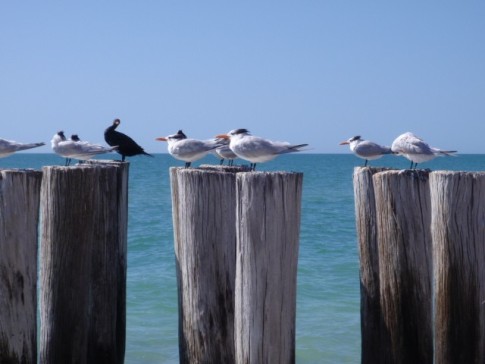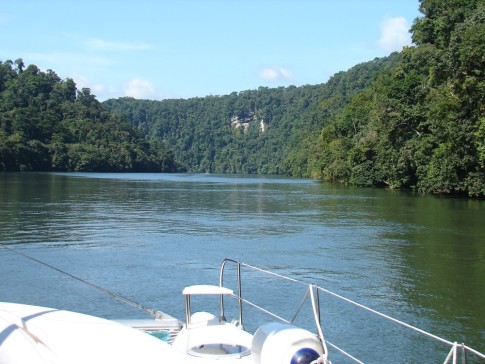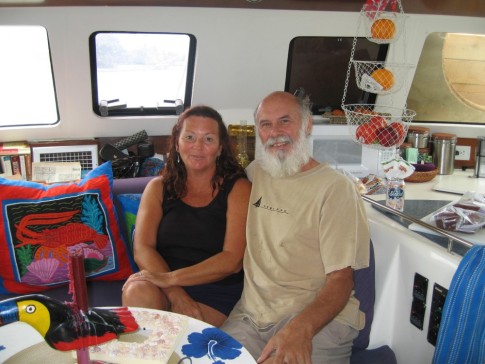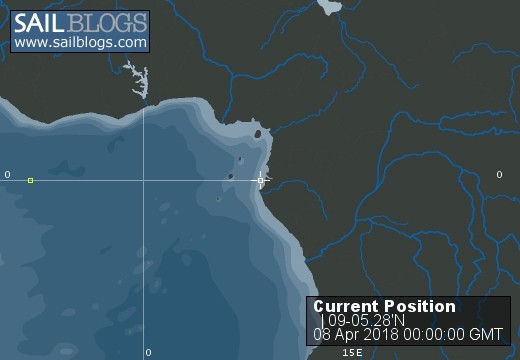
s/v Always & All Ways
22 April 2022 | Bocas del Toro
12 March 2020
08 April 2018 | Escudo de Veraguas
06 April 2018 | Narranja Abajo
04 April 2018 | Shelter Bay Marina
02 April 2018 | Shelter Bay Marina
30 March 2018 | Shelter Bay Marina
26 March 2018 | Shelter Bay Marina
23 March 2018 | Shelter Bay Marina
22 March 2018 | Shelter Bay Marina
21 March 2018 | Rio Chagres
20 March 2018 | Rio Chagres
19 March 2018 | Rio Chagres
18 March 2018 | Punta Limon
17 March 2018 | Euero, on the Mosquito coast of Panama
16 March 2018 | Escuda de Veraguas
15 March 2018 | Escuda de Veraguas
14 March 2018 | Escuda de Veraguas
13 March 2018 | Escuda de Veraguas
12 March 2018 | Zapatilla Cays
A much nicer day.
15 June 2013 | Proividencia, Columbia
Mark
Well, the wind hasn't died down, but Friday dawned clear and bright. Looking to shore, it looked like we had dragged a bit - not surprising when you are anchored with a plow type anchor in soft sand and see steady 20-25 kt winds. The anchor does what its name implies, it plows. As long as you have anchored wisely (no serious obstacles near behind you) this is not dangerous as the anchor never "lets go." If that were to happen (and it has to us in the past) you are in danger of going quite a distance before it resets and holds you again. If you drag into deeper water, it may never reset. But when a plow plows through soft sand, it just moves a short distance leaving a furrow behind. Just to be sure, I swam the anchor again. It was even better buried and the furrow behind it was no more than 10-15'. I guess I won't worry. After checking the anchor, I took dinghy and went in to Santa Catalina to get our laundry from Miss Barbara, but she was not home. I took a gallon of used motor oil to the lady next door. She uses it to keep ants out of her house by pouring it around the foundation so is always anxious to get any that the cruisers might have. I had not disposed of mine yet from changing the oil before we left so I was happy to give it to her. (We also use used oil mixed with diesel to paint the posts of our house to keep out ants and termites but I have plenty of oil back home.) The supply boat had come Wednesday, but we did not go in to town Thursday because of the weather. I was hoping there would still be some good veggies left Friday. I hit all three groceries in town and was able to score a nice papaya, some nice red peppers, beautiful leeks, and nice big limes. They had a lot of mangoes, but they were all refrigerated and still very green. I don't think they will riper properly after being refrigerated, too bad. I also found some flour tortillas (I don't know how, but we managed to not bring any.) and at the bakery, sweets for breakfast and some nice big hamburger rolls all freshly made. That place does smell wonderful! I also found a bottle of Johnny Walker Double Black Scotch. I like JW Black, so I figured Double Black should be better, right? For some reason, Scotch is much cheaper here than in the US, so I splurged and bought a bottle. It IS very good, but not quite as dark or smoky as I expected. By the time I got back to the boat, it was well after noon. We decided that since the wind was still blowing pretty strong and we had done all the really protected areas of reef and we needed to be cleaned up and back on shore for Jim's talk @ 3:00, we would forego a hookah today. We'll be doing a lot of diving on the last half of our trip and there is so much else to do here that we really don't mind. At 3:00, Jim of s/v Nilaya, was giving a talk on the cruising life. That he had been asked to speak at a Raisal Cultural event is evidence of how well accepted cruisers are in this community. We wanted to show our support and Jim had asked me to say a few words about the differences between a mono and a cat. The event was very well attended and many of the islanders seemed genuinely interested in hearing about our mobile but tiny homes and the joys and frustrations they bring. Jim did an excellent job. He was followed by the last of Dr. Hermann's talks where he finally spoke specifically about medicinal plants and gave examples. He divided the plants into three categories: 1) Cleansing or purging plants. These are all very bitter and produce vomiting or diarrhea (or both) when consumed initially. This is felt in Traditional Medicine to be an important way of getting rid of toxins in our body. If the plant is taken regularly, it no longer produces so violent a reaction, but continues to cleanse the body. When he had been here 6 months ago for a similar cultural event, he left as "homework" for people to try taking one of these bitter plants first thing in the morning before eating anything else. Several of the women had done so and shared their results. 2) Protective plants. These are specific to each region. He gave an example of a plant consumed in the Upper Amazon that prevents malaria and talked about how he investigated why so few of the indigenous people got malaria (they were American Indian, not African so no sickle cell) and discovered finally that it was the plant they were taking daily. 3) Curative or treatment plants. This part was fascinating as it is based on the concept of 'hot' and 'cold' which is foreign to modern medicine and took some effort to grasp. Simply put, 'hot' illnesses are the "itis" diseases - gastritis, arthritis, cystitis, etc. Of course the hallmark of these diseases is inflammation which has 'flame' or heat as its basis, but we were never taught to think of it that way. The example he gave of a 'cold' illness is the flu or common cold. Again the word itself is there, but it is not how we usually think of it. He next talked about how we classify plants - and all foods - as hot or cold. As I knew, the tongue can detect only four sensations: sweet, salt, acid, and bitter. All tastes are made up from a medley of these four. In Traditional Medicine, sweet and salt are considered 'hot'; and acid and bitter, 'cold.' Many 'hot' diseases (inflammation) are caused by an imbalance in the diet with the consumption of too much 'hot' food. Indeed, modern medicine is finally finding that a diet high in salt and sugar does lead to inflammation and is a factor in many inflammatory diseases, including atherosclerosis and heart disease. One treats this with bitter (or cold) plants and re-establishing the balance in our diet. I would love to see a chart with medicinal plants broken down into hot and cold classes and maybe I will search for one. It is not always obvious to me. For example mint is a cold plant because it is "refreshing". (The root of the word fresh, means cool.) Most aromatic plants (basil, thyme, etc.) are also cool for the same reason, but I don't think of them as acid or bitter. It was a great introduction to a topic that has fascinated me for years and perhaps I will be able to pursue it further now. After the talk, several of us cruisers along with Orville & Orealis hung out together talking until it started to get dark. We had not put our anchor light on at 3:00 so needed to get back to the boat to do that. Saturday there will be a cooking demonstration in the morning and cat boat races in the afternoon. The bay where we are anchored will be the finish line so we should have a good view although it was also offered that we could follow the race in our dinghies is we wanted to - some different from US organized races! Some of that fine Johnny Walker Scotch and then I made lobster and leeks in a fennel cream sauce over penne for dinner. We really do suffer when we are out cruising ;>)
Comments
| Vessel Name: | Always & All Ways |
| Vessel Make/Model: | Fountaine-Pajot Belize 43 |
| Hailing Port: | Hancock, NH, USA |
| Crew: | Mark & Deb Parker |
| About: | Mark, an ER doc, retired 10/08 to become a sea gypsy. Deb, an educator, has been retired since 5/07 and was equally anxious to leave the cold of New England far behind |
| Extra: | We now have a hurricane season home in Bocas del Toro, Panama. We still plan on spending many months cruising every year. |
Always & All Ways's Photos - Main
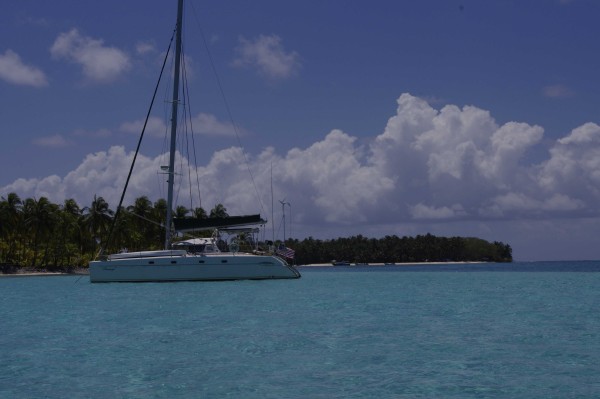 |
Pictures from our 2012 cruise from Bocas del Toro, Panama, to the Bay Islands of Honduras and back. Posted each time we have internet
2 Photos | 7 Sub-Albums
Created 28 March 2012
|
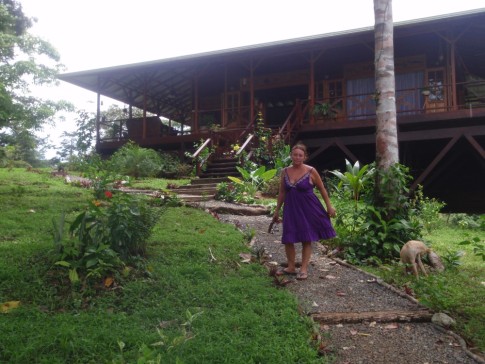 |
Pictures of our home at Discovery Bay, Isla Solarte, Bocas del Toro, Panama. More (older) can be found in Discovery Bay album.
49 Photos | 1 Sub-Album
Created 5 August 2010
|
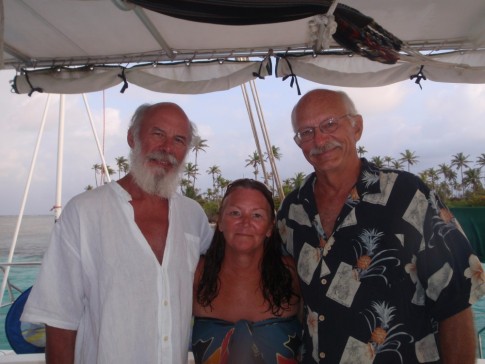 |
Pictures of our recent trip to the San Blas Islands of Panama with friends Ron & Cynde
58 Photos | 3 Sub-Albums
Created 29 April 2010
|
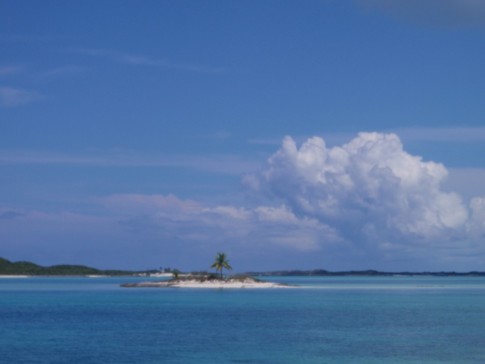 |
Pics from the month we spent at some of the out of the way places in the Bahamas, May 2009.
39 Photos
Created 22 June 2009
|
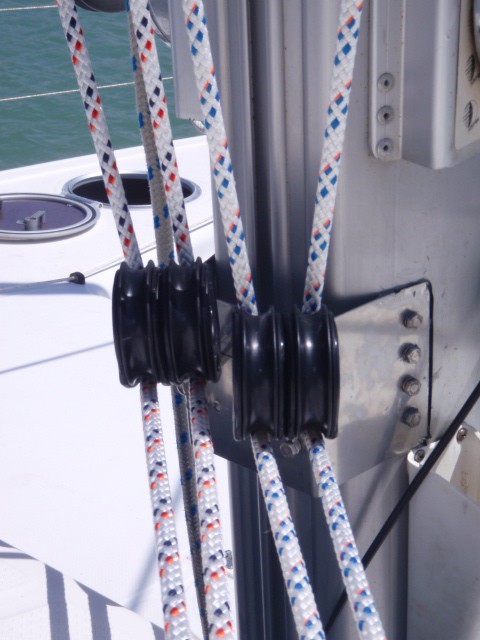 |
Pictures of some of the improvements we have made over the past few months
37 Photos
Created 11 April 2009
|
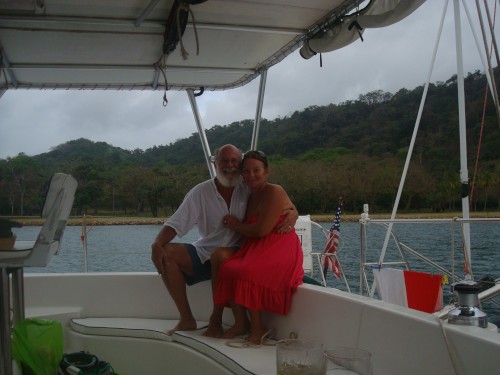
Who: Mark & Deb Parker
Port: Hancock, NH, USA
Current Position
Favorite Links
No Links Added Yet


